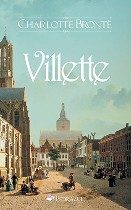 Charlotte Brontë •
Charlotte Brontë •
Villette •
I’ve never been much of a Jane Austen fan; her writing is a little too prim and bloodless for my taste. Charlotte Brontë is another matter altogether. Where Jane is reserved and ironical, Charlotte is wild and passionate. The throbbing emotional life of her characters grips at every turn.
Although Jane Eyre (mad wife in attic story) gets the lion’s share of attention among Brontë’s books, Villette is equally powerful and even better constructed. Brontë’s harsh judgments of Catholicism (hypocritical, coarse, and treacherous) and Belgians (sly, lazy, and dishonest) would be disturbing in a contemporary author, but accurately mirrored prevailing British sentiments of the mid-1800s. From this distance we can forgive her the insularity and just enjoy the story.
And what a tale it is. Brontë paints a complex psychological portrait of orphaned Lucy Snowe, whose interior life is anything but cold. While teaching at a pensionnat in Brussels, Lucy falls for the irascible M. Paul—Mr. Rochester transplanted to the Continent—and fights against her own desire. Several subplots underscore how the arbitrary distinctions of class, circumstance, and comeliness determine a woman’s fate. The vignette of tiny Polly Home waiting for hours outside the door of her heedless idol, the teenage Graham, is wrenching and indelible. Children do not forget promises—or slights.
But my favorite element here is the pensionnat’s allée défendue (forbidden walkway), with its ghostly nun and mystical overtones. Brontë evokes shivers in a way Austen never could.
Come to think of it, Brontë felt much as I do about Austen: “She ruffles her reader by nothing vehement, disturbs him by nothing profound; the passions are perfectly unknown to her,” Charlotte remarked of Jane. Happily for us, she set out to do better—and persisted until the results were published.
But that’s another story.







Your email address will not be published.